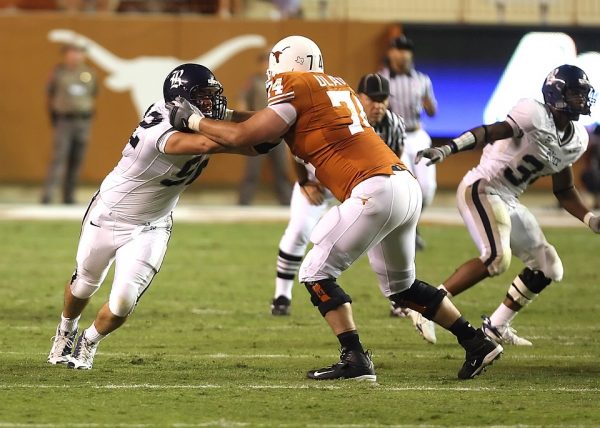
The NCAA was back in the Supreme Court last month, in the middle of its fabled March Madness basketball tournament. In NCAA v. Alston the association argued that the NCAA, not the courts, should decide the definition of amateurism. Or in other words, the NCAA should be in charge of deciding what types of compensation college athletes are able to receive–or not receive, as the case may be.
The NCAA’s arguments built on their last Supreme Court case, in 1984, when the court ruled that the association’s actions in monopolizing TV contracts for college football violated antitrust regulations. But in his decision ruling against the NCAA Justice Stevens also included the line, “The NCAA plays a critical role in the maintenance of a revered tradition of amateurism in college sports.” The NCAA has leaned on this language over the past 35 years to maintain control over what benefits college athletes may receive, with the stated purpose of maintaining a separation between college and professional sports.
The NCAA contends that the “product” of college sports will be devalued if college athletes are allowed to be paid, as fewer consumers will be interested in watching college sports if players are perceived as professional. Given that this argument amounts to an argument about consumer demand, what does the social science research say on whether the public believes that college athletes should be paid?
A recent Ohio State survey (National Sports and Society Survey-NSASS) finds that a majority of Americans do support paying college athletes. This is a change from past research and potentially an important finding for the current legal challenges.
- Chris Knoester and B. David Ridpath. 2020. “Should College Athletes Be Allowed to Be Paid? A Public Opinion Analysis.” Sociology of Sport Journal 1(aop):1–13.
What has not changed are the racial dynamics of who is more likely to support paying college athletes, with Black Americans more likely to support paying college athletes than white Americans.
- Chris Knoester and B. David Ridpath. 2020. “Should College Athletes Be Allowed to Be Paid? A Public Opinion Analysis.” Sociology of Sport Journal 1(aop):1–13.
- Michael Mondello, Alex R. Piquero, Nicole Leeper Piquero, Marc Gertz, and Jake Bratton. 2013. “Public Perceptions on Paying Student Athletes.” Sport in Society 16(1):106–19.
The main reason that public opinion has shifted is a growing sense that college athletes are being exploited, especially in football and men’s basketball. Exploitation is primarily a moral issue, with college athletes (and increasingly others) questioning whether the exchange relationship between themselves and the university is fair. Black athletes have long reported feelings of exploitation, and a recent NBER working paper illustrated how revenue brought in by Black men is being used to fund educational opportunities for other, white athletes.
- Derek Van Rheenen. 2013. “Exploitation in College Sports: Race, Revenue, and Educational Reward.” International Review for the Sociology of Sport 48(5):550–71.
- Craig Garthwaite, Jordan Keener, Matthew J. Notowidigdo, and Nicole F. Ozminkowski. 2020. Who Profits From Amateurism? Rent-Sharing in Modern College Sports. Working Paper. 27734. National Bureau of Economic Research.
- Krystal K. Beamon (2008) “Used goods: Former African American College Student-Athletes’ Perception of Exploitation by Division I Universities.” Journal of Negro Education” (77): 352–364
- John N. Singer (2019). Race, Sports and Education: Improving Opportunities and Outcomes for Black Male College Athletes. Cambridge: Harvard Education Press.
Even aside from questions of exploitation, the concept of amateurism itself is suspect. Scholars have long argued that amateurism is a fundamentally classist concept based on nineteenth-century ideas of aristocracy, morality, and a “purity” of sport based on exclusion of the working-class. This flawed ideal has never described big-time American college sport, which has been commercialized and professionalized since its founding. It has certainly not described college athletics since the NCAA instituted one-year, renewable athletic scholarships in 1973, which in practice look and act like employment contracts
- Allen L. Sack and Ellen J. Staurowsky. 1998. College Athletes for Hire: The Evolution and Legacy of the NCAA’s Amateur Myth. Westport, CT: Praeger.
- Ronald A. Smith. 1990. Sports and Freedom: The Rise of Big-Time College Athletics. New York: Oxford University Press.
Taylor Branch’s now classic piece in The Atlantic, “The Shame of College Sports,”as well as the publicity around Ed O’Bannon’s court case to allow college athletes to profit off of their likeness, illustrate how issues of amateurism and exploitation in college sports have firmly entered popular discourse. The decision in Alston won’t answer many questions about the future of college sports, but it does represent an effort by the NCAA to assert control over a rapidly-changing situation. Court watchers feel that the Court is unlikely to rule for the NCAA after seeing oral arguments, which will make name/image/likeness and potentially pay-for-play legislation all the more important over the next few years.

Comments